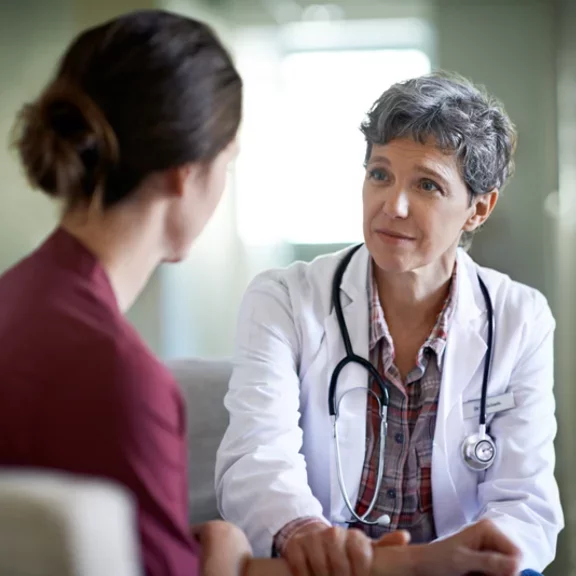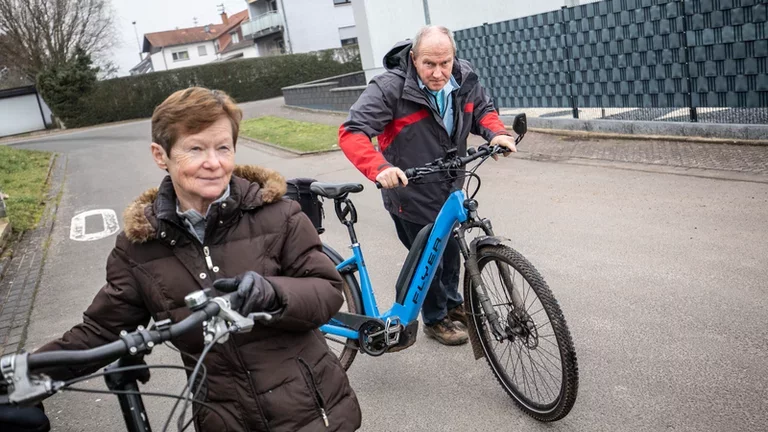Sleep Apnoea Diagnosis
Diagnosing Sleep Apnoea is really important and can reassure you
Three easy ways to detect Sleep Apnoea.
Detection is an important and simple step that can put your mind at ease. Check it out:
- One way is to ask your partner or a family member if you snore too loudly or if they have noticed that you pause your breathing during sleep. They are often the first to notice. (1,2)
- Another way is to take the Berlin Questionnaire, a simple test that tells you if you are at risk.
- You can also record yourself sleeping. When you wake up, play the recording to check your breathing.
If you suspect you have sleep apnoea, schedule a visit to your doctor. Don't forget to bring the (Berlin) Questionnaire “I am at Risk?” and/or recording your sleep. There are smartphone apps that can help you with this.
The diagnosis of sleep apnoea can only be made by medical professionals, either through a sleep study, at a sleep clinic, or at home using special equipment to perform the polysomnography test.
Performing a sleep study at home or in hospital
Visiting your doctor
When you visit your doctor, they will assess your symptoms and perform a physical exam to see if you need to be referred to a sleep specialist. If you visit a sleep specialist, they will ask you questions about your symptoms and medical history. You will likely have to fill out a form – usually the Epworth Sleepiness Scale(1) – about how sleepy you feel when you are awake. They will also be able to measure your weight and the circumference of your neck and perform breathing tests. If you have symptoms of obstructive sleep apnoea (OSA), your specialist will request a sleep study to confirm the diagnosis.
Diagnosis of Sleep Apnoea
Air Liquide Healthcare is here to support you along the way...
References
- The World Health Organization. Chronic respiratory diseases www.who.int/gard/publications/chronic_respiratory_diseases.pdf viewed 21/05/2015
- Rules for Scoring Respiratory Events in Sleep: Update of the 2007 AASM Manual for Scoring of Sleep and Associated Events – Journal of Clinical Sleep Medicine, Vol. 8, No. 5, 2012
- Sleep breathing disorders – European Respiratory Society White Book (chapter 23)
- Obstructive sleep apnoea, Sleep Health Foundation, 2011
- American Academy of Sleep Medicine (AASM)- Sleep disorders-Sleep Apnea, Consulted 12/08 /2021@ https://sleepeducation.org/sleep-disorders/sleep-apnea
- Obstructive sleep apnoea, Sleep Health Foundation, 2011
- Sleep breathing disorders – European Respiratory Society White Book (chapter
- Terán-Santos J., Jiménez-Gómez A., & Cordero-Guevara, J. (1999). between sleep apnea and the risk of traffic accidents. N Engl J Med., 340(11), 881-3.
- Somers VK et al. Circulation. 2008 Sep 2;118(10):1080-111
- Reutrakul S et al. Obstructive Sleep Apnea and Diabetes: A State of the Art Review. Chest. 2017 Nov;152(5):1070-1086
- Garbarino S et al. Association of Anxiety and Depression in Obstructive Sleep Apnea Patients: A Systematic Review and Meta-Analysis. Behav Sleep Med. 2020 Jan-Feb;18(1):35-57
- Bonsignore MR et al. Obstructive sleep apnea and comorbidities: a dangerous liaison. Multidiscip Respir Med. 2019 Feb 14;14:8
- American Heart Association. Heart and stroke encyclopedia. Coronary thrombosis
- American Heart Association. Heart and stroke encyclopedia. Heart failure
- Obstructive Sleep Apnoea – A guide for GPs – British Lung Foundation (NHS)
- Benjafield Adam V et al. Estimation of the global prevalence and burden of obstructive sleep apnoea: a literature-based analysis. Lancet Respir Med. 2019;7(8):687-698. doi:10.1016/S2213-2600(19)30198-5
- Tufik S, Santos-Silva R, Taddei JA, Bittencourt LRA. Obstructive sleep apnea syndrome n the Sao Paulo epidemiologic sleep study. Sleep Med 2010;11:441–6.
- Heinzer R, Vat S, Marques-Vidal P, et al. Prevalence of sleep-disordered breathing in the general population: the HypnoLaus study. Lancet Resp Med 2015;3:310–8.
- Sleep breathing disorders – European Respiratory Society WhiteBook (chapter 23)


